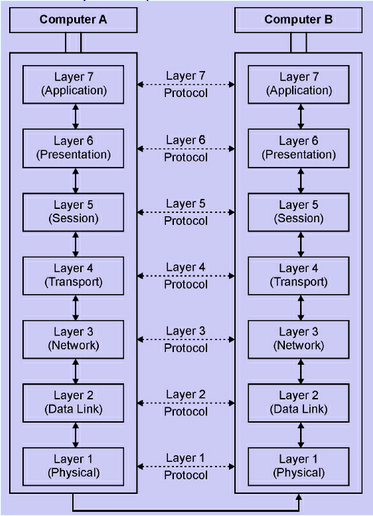The TCP/IP Reference Model:
ARPANET was developed by Advanced Research Projects Agency (ARPA) of the United States Department of Defense. Later this was used to connect hundreds of universities and government organizations. When radio and satellite networks were added they were troubles in the interworking. So a new architecture was developed in order to support multiple networks this was named as
TCP/IP reference model
TCP/IP is used as a de facto standard for the Internet to transmit data over the networks. Even network operating systems like NetWare that have their own protocols, support TCP/IP.
The four TCP/IP layers are discussed below:

Network interface layer
The network interface layer is the lowest layer in the TCP/IP reference model. It is also known as the network access layer. The network interface layer is responsible for sending the TCP/IP packets on the network medium as well as receiving them off the network medium. This way, the TCP/IP is used for connecting different types of networks. Various LAN technologies like token ring and ethernet and WAN technologies like X.25 and frame relay can be connected through the network interface layer. The network interface layer is similar to the data link and physical layers of the OSI reference model.
The internet layer
The internet layer is the next layer of the TCP/IP reference model. This layer manages the addresses of each message so that it gets transmitted to the right destination. The gateway on the computer verifies this address and decides where the packet needs to be forwarded.
The internet layer is the key layer that holds the whole architecture together. It permits the hosts to inject data packets into any network and make them travel independently to the destination.
The internet layer defines an official packet format and protocol called IP (Internet Protocol). This layer delivers IP packets to their destination. It functions in a manner similar to OSI's network layer. In both these layers, packet routing is a major activity in this stage.
The transport layer
The transport layer is the next layer in the TCP/IP reference model. This layer assembles the message into small data packets and sends them over the Internet to their destination. When the TCP layer receives these packets at the destination, it converts them back into the original message.
This layer, like OSI's transport layer, allows peer entities on the source and destination hosts to carry on the conversation. Two end-to-end protocols are defined here. The first one, TCP, is a reliable connection-oriented protocol that allows a byte stream originating on one system to be delivered without error to any other system in the network.
The second protocol, UDP (User Datagram Protocol), is an unreliable, connectionless protocol for applications that do not require TCP's sequencing or the flow control which is provided by TCP. It is used for client/server type request-reply queries and applications in which prompt delivery is necessary.
The application layer
This layer is just above the transport layer. It contains all the higher level protocols. The early ones include virtual terminal protocols (TELNET), file transfer protocols (FTP), and electronic mail protocols (SMTP).
Refer to Figure 9.5 for a mapping of the seven layers in the OSI reference model with the corresponding four layers of the TCP/IP reference model.
Email based Information technology and system assignment help - homework help at Expertsmind
Are you searching Computer science expert for help with The TCP/IP Reference Model questions? The TCP/IP Reference Model topic is not easier to learn without external help? We at www.expertsmind.com offer finest service of Information technolgy and system assignment help and Information technology homework help. Live tutors are available for 24x7 hours helping students in their The TCP/IP Reference Model related problems. We provide step by step The TCP/IP Reference Model question's answers with 100% plagiarism free content. We prepare quality content and notes for The TCP/IP Reference Model topic under Information technology theory and study material. These are avail for subscribed users and they can get advantages anytime.
Why Expertsmind for assignment help
- Higher degree holder and experienced experts network
- Punctuality and responsibility of work
- Quality solution with 100% plagiarism free answers
- Time on Delivery
- Privacy of information and details
- Excellence in solving Information Technolgoy and system queries in excels and word format.
- Best tutoring assistance 24x7 hours